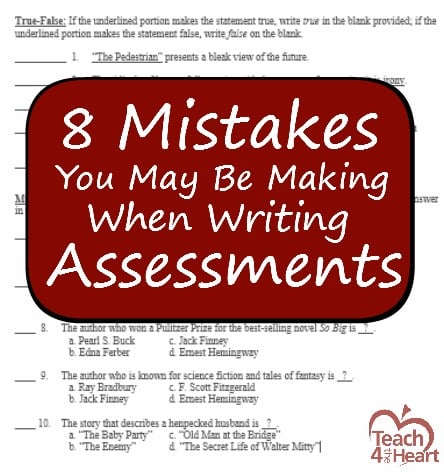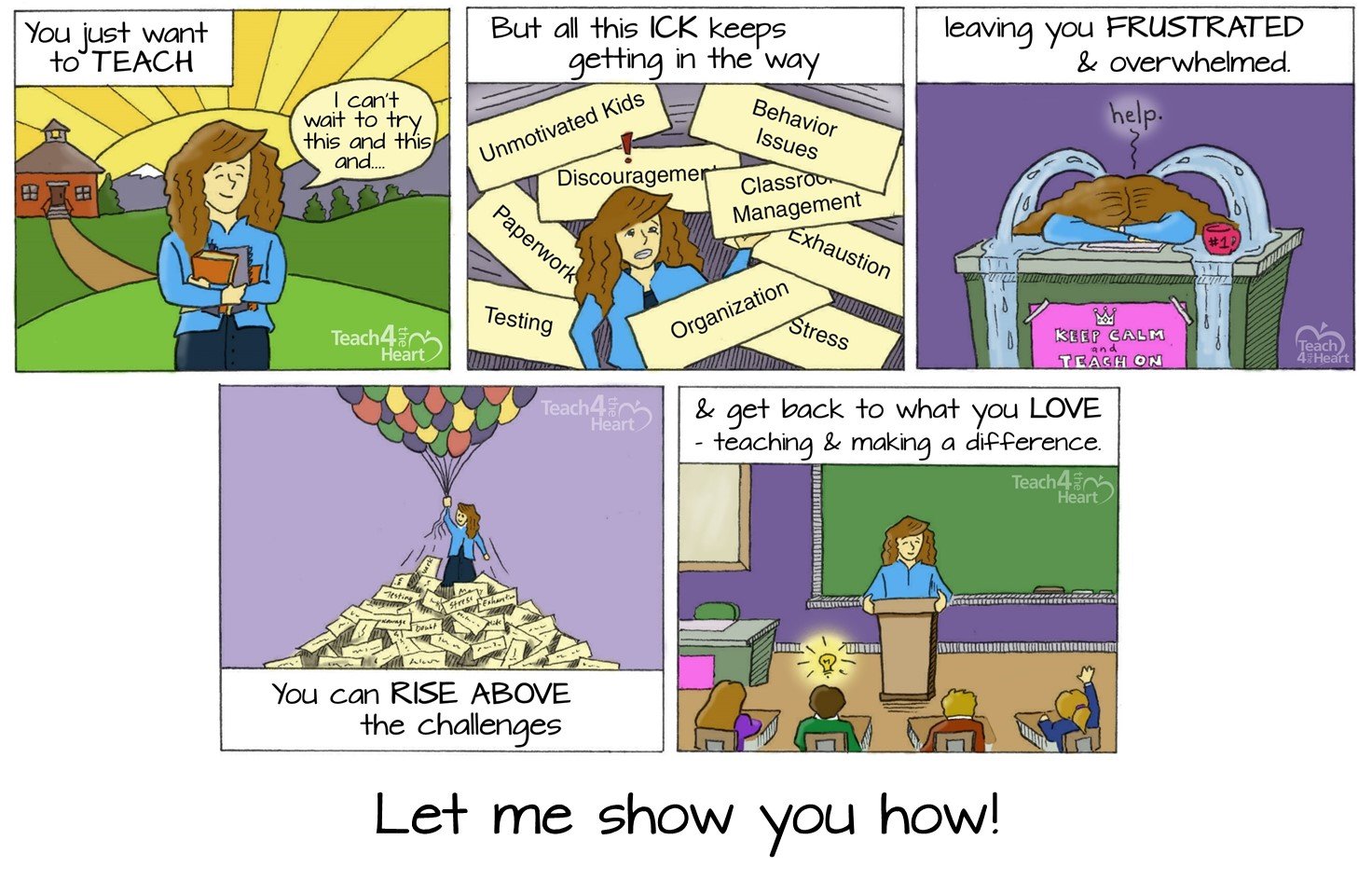If you ever write your own tests, you know this task is not always as easy as it sounds. Trying to come up with good questions that accurately gauge the students’ understanding can be challenging.
Now we know that most students don’t necessarily enjoy taking tests, but the question we need to ask ourselves is……Is the way our tests are written contributing to their frustration?
As teachers, we want to make the test-taking process as simple and painless as possible. We don’t want our students to be frustrated with poorly written questions or confusing directions.
So check out our list of common mistakes and see if any of these need to be corrected on your next test.
Common Mistakes Teachers Make When Writing Tests
- Writing confusing questions. Nothing frustrates a test-taking student more than a question that is just downright confusing. So when you write your tests, ask yourself if there’s even a slight possibility that student could be confused by a question. If there is, rewrite it. And if you get this complaint a lot from students, don’t just blow it off. Instead to have a colleague look over your tests to help you identify unclear questions before you give it to your students.
- Including trick true-false questions. Be especially careful of true/false questions like this one: “The Pythagorean Theory is c2 = a2 + b2 .” For you non-math people out there, the formula is correct, but it’s technically called the Pythagorean Theorem not the Pythagorean Theory. Unless you made a big deal out of the word Theorem during your lectures, a question like this will really frustrate your students. They’ll be sitting there debating “Did he put theory to see if we knew the name so it’s false or did he just put the wrong word and it’s actually true since the formula is correct?”
The best way to help our students avoid this frustration is to use focused true/false in which students must say whether the underlined portion makes the statement true or false. That way an inadvertently trick question such as “The Pythagorean Theory is c2 = a2 + b2 ” is no longer quite as tricky since it focuses the question on just the underlined portion.
- Making multiple choice options different lengths. Sometimes the correct answer to a multiple choice problem naturally is much longer or much shorter than the other options. But that’s no good because it makes it too obvious. When this happens, you’ve got to find a way to make them all a similar length.
- Creating page-flipping tests. Don’t create a situation where students have to keep flipping pages back and forth to look at options. For example, a matching section should never span more than one page.
- Not arranging matching responses in a logical order. Whenever you create a matching section, arrange the responses in a logical order, such as alphabetically. This will help students find the answer they’re looking for more quickly. The longer your matching section is, the more important this is.
- Giving away answers elsewhere on the test. A smart test-taker will notice if you give away an answer to question #6 in the directions to prompt for question #25. So unless you’re intentionally giving them a clue, be very careful!
- Writing unclear directions. Make your directions as specific and clear as possible. And be sure to include as much information as is needed. Phrases such as “answers may be used once, more than once, or not at all” are great to provide necessary clarity.
- Asking unimportant questions. I’ve saved the most crucial mistake for last. Please, don’t ask unimportant or too-detailed questions just so you can have “enough” questions. The point of the test is to gauge students’ understanding. If we ask a random, unimportant question that we mentioned once briefly, not only will the students be frustrated but we will fail to get an accurate assessment of their skills. So when you write a test, ask yourself what the most important things are that the students should know; then write questions about those things.
Bottom line…..If your students are complaining about your tests, don’t just blow them off right away. Take the time to find out what exactly is frustrating them. Of course their complaints could be completely unfounded. But they just might be onto something….
What other mistakes have you made or seen others make while writing tests? What is your best piece of advice for test-writing?




I would add this mistake: Writing too many (or even all) questions at the Knowledge and Comprehension levels. A good test will imbed the content in a way that requires, at a minimum, application to a new context. If our goal is to create students who can think and solve problems at higher levels, then our assessments need to give them that opportunity.